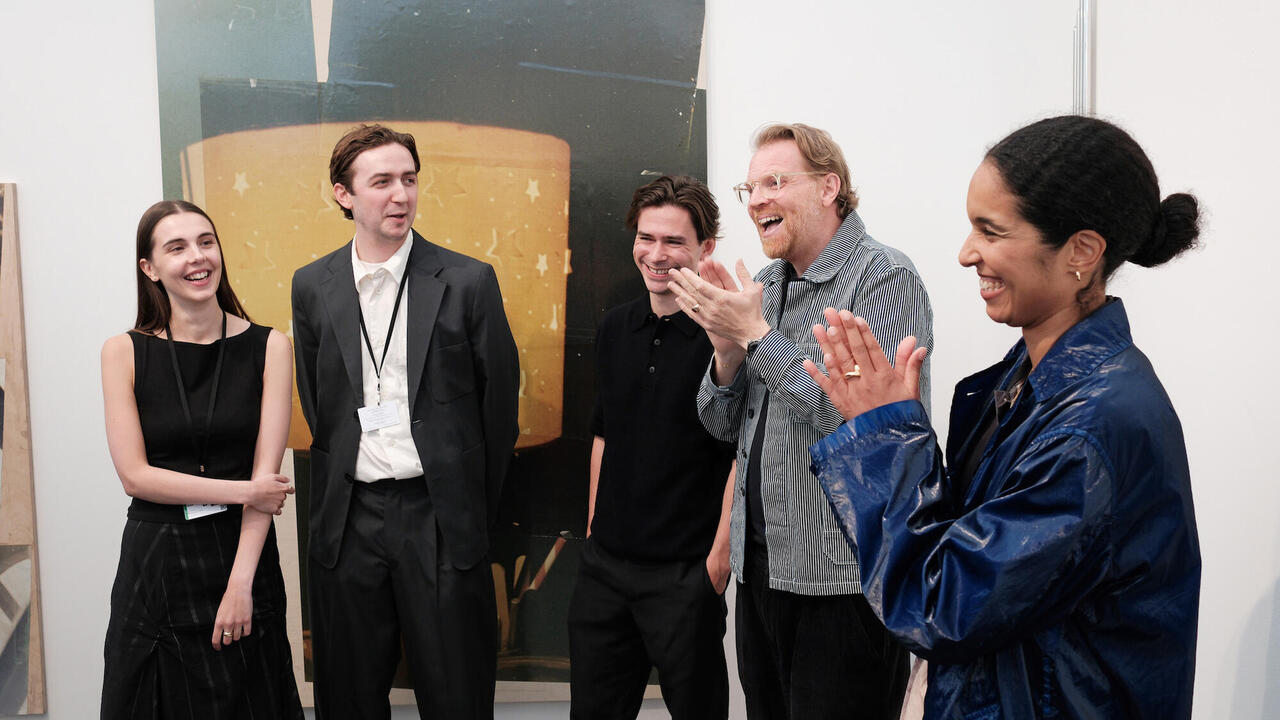Nicola Tyson
Despite, or perhaps because of, landing midway into a season already noted for placing idiosyncratic painting styles at the forefront of public awareness, Nicola Tyson's commercial gallery debut had no trouble making its presence felt. Tyson is best known to New Yorkers as co-proprietor of Trial Balloon, a three-year experiment in presenting feminist principles through the medium of an alternative space. (It has, regrettably, run its course). Since she has always been first and foremost a painter, it turns out that one of the hidden premises behind Trial Balloon was that it would also provide a suitable context for Tyson to launch her own work (along with that of Nicole Eisenman, Patti Cronin and others). Although she continued to work on her art whilst running the space, this group of paintings shows a marked degree of improvement once Tyson was able to focus uninterruptedly on her studio activity.
The immediate impression one gets from these works is of their deeply felt debt to Surrealism. Set against backgrounds that are mostly blocked in with warm, solid sheets of colour, Tyson's figures are not so much representations of human beings as elaborate exercises in modelling and gesture that convert the human form into a site for anatomical free-play. Heads are multiplied and faces erased, torsos are twisted, arms transformed into flippers or lances, and clothing minimalised and converted into fetish uniforms. Breasts and buttocks have been enlarged and distorted, and their partial nakedness pointed to with an almost clinical passivity. The figures stand, mannequin-like, in gestures of salutation and/or submission, neither caught in the act nor posing for our delectation. They actually seem oblivious to our presence, trapped, as each one is, in her or his individual, affectless space.
While critics cite Hans Bellmer and Francis Bacon as the most obvious antecedents to Tyson's experiments in form, it seems that one could just as easily bring Max Ernst, Salvador Dali or even early Hockney into the mix as relevant pioneers in extravagant distortion of the human figure set in quasi-real environments. However, even this search for painterly roots does not take into account the extent to which Tyson's work seems committed to a fairly Pop idea of what is normal. That is, by underscoring the matter-of-fact atmosphere enveloping her frequently grotesque subjects, Tyson is able to derive maximum benefit from both the absurdity of their respective positions as well as the rich, sensual surfaces that she patiently creates. In other words, although one catches glimmers of an oblique violence in Tyson's forms, her overall intent is largely playful a point which is brought home by the abundant installation of drawings in the gallery's back room. Running breathlessly through a broad array of biological metamorphoses over the course of dozens of small pencil works, Tyson's draughtsmanship is nothing short of superb: technical enough to grab our attention, but so whimsical that it makes the rest of us gape half-enviously at all the fun she seems to be having.















